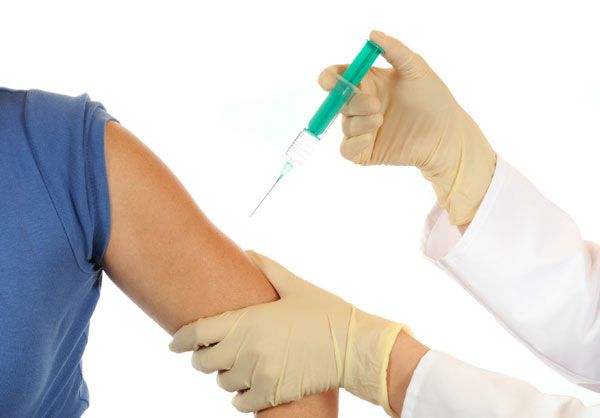HPV Vaccine: 2 Doses May Reduce Risk of Genital Warts

Just two doses of the human papillomavirus (HPV) vaccine may considerably reduce the risk of developing genital warts, although getting the recommended three doses provides the most protection, a new study from Sweden suggests.
Among girls ages 10 to 16, the rate of new genital warts cases was 71 percent lower in those who received two doses of the vaccine compared to those who were unvaccinated, the study found. Three doses provided slightly more protection: the rate of new genital warts cases was 82 percent lower in those who received all three doses compared with those who were unvaccinated.
Three doses prevented 59 more cases of genital warts per 100,000 people per year compared with two doses, which the researchers call a "small difference." [5 Dangerous Vaccination Myths]
The findings suggest that vaccination programs should continue providing the recommended three doses, said study researcher Lisen Arnheim-Dahlström, of the department of medical epidemiology and biostatistics at the Karolinska Institutet in Stockholm.
But a two-dose schedule may be possible in the future, Arnheim-Dahlström said. However, more long-term studies are needed first, to examine the effect of two doses on genital warts and the initial stages of cervical cancer.
A few small studies have already suggested that one or two doses of the HPV vaccine may protect reasonably well against HPV infection.
In the United States, the HPV vaccine is currently licensed for people between ages 9 and 26, and it works best if given before people become sexually active. It is primarily used to protect against cervical cancer, which is often caused by HPV infections. But it can also protect against genital warts: the Gardasil vaccine shields against HPV types 6 and 11, which cause about 90 percent of genital warts, the researchers said.
Sign up for the Live Science daily newsletter now
Get the world’s most fascinating discoveries delivered straight to your inbox.
The new study analyzed information from more than 1 million girls and women in Sweden ages 10 to 24, about 30 percent of whom received at least one dose of the HPV vaccine. About 80 percent of those who were vaccinated received all three doses.
During the nearly four-year study, there were more than 20,000 cases of genital warts, including 322 in people who received at least one dose of the HPV vaccine.
Because not everyone with genital warts reports having the condition or seeks treatment for it, the study may have underestimated the true number of genital wart cases, the researchers said. However, this underestimate would likely apply to all vaccination groups, they said.
Experts recommend that people who received one or two shots of the HPV vaccine still finish the three-dose series, even if more time has elapsed than is recommended between shots.
The new study is published in the Feb. 12 issue of the Journal of the American Medical Association.
Follow Rachael Rettner @RachaelRettner. Follow Live Science @livescience, Facebook & Google+. Original article on Live Science.

Rachael is a Live Science contributor, and was a former channel editor and senior writer for Live Science between 2010 and 2022. She has a master's degree in journalism from New York University's Science, Health and Environmental Reporting Program. She also holds a B.S. in molecular biology and an M.S. in biology from the University of California, San Diego. Her work has appeared in Scienceline, The Washington Post and Scientific American.












